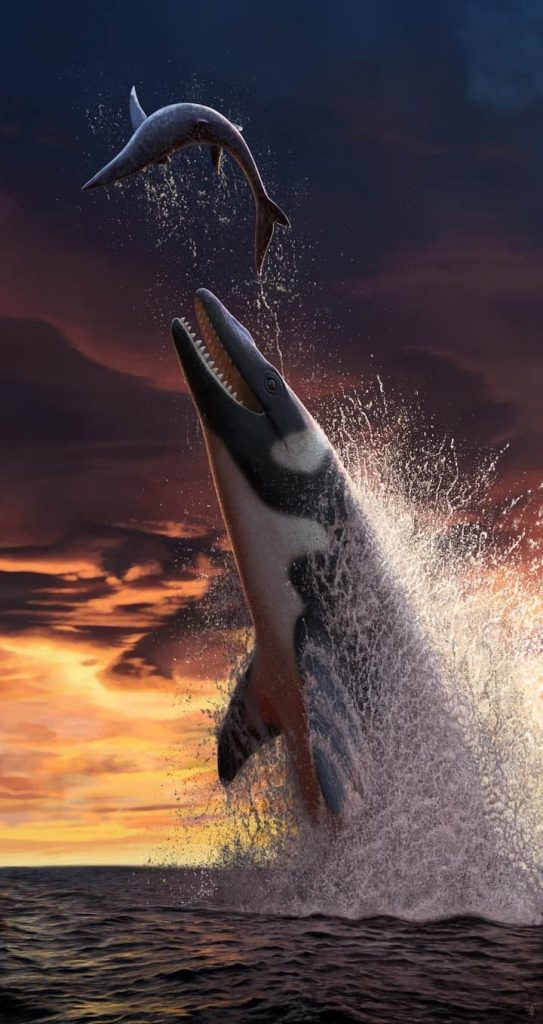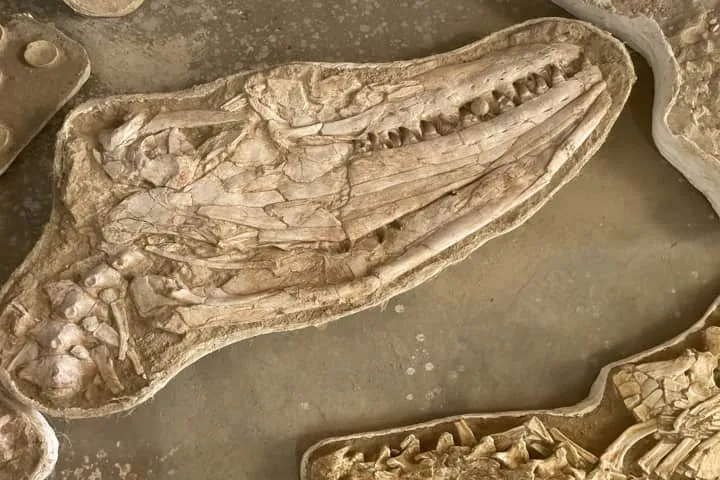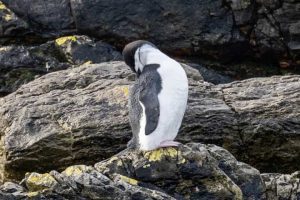It was a mega beast that ruled the waves of the planet 66 million years ago and this was revealed by the unbelievable fossils of this giant marine lizard. As per a report in sciencealert.com, this creature belongs to mosasaur species, who hunted during the Late Cretaceous period.
Christened as Thalassotitan atrox, a close look at its teeth along with other remains points out that this menacing creature was anything but tender and kind. Right at the top of the food web, it ate tough animals like plesiosaurs, other mosasaurs and sea turtles. Its relatives survived by eating smaller prey including fish and ammonites.
Describing this animal, evolutionary biologists and palaeontologist Nick Longrich who is from United Kingdom’s University of Bath said: “Thalassotitan was an amazing, terrifying animal. Imagine a Komodo dragon crossed with a great white shark crossed with a T. rex crossed with a killer whale.”
One can’t even fathom the scale of mosasaurs as there is no being alive today to compare it with. It could reach 40 feet in length and was twice the size of modern crocodilians yet it was distantly related to modern snakes and iguanas.

They were fully geared for aquatic life and their physical attributes included a reptilian head, fins which resembled that of sharks and instead of clawed feet they had flippers. Teeth of the mosasaur species depended on what they ate – tiny and jagged for those eating squid and fish while those preying on beings with shells had teeth that were blunter and crushing jaws.
Devoid of an acute faculty of smell, mosasaurs were basically predators and not scavengers. They ate turtles, cephalopods, fish, molluscs, their smaller cousins and even birds with Thalassotitan dominating the species.
The remains of mosasaurs were found in Morocco in phosphate beds and this area has varied and outstandingly preserved Cretaceous and Miocene fossils. Among the fossils found are vertebrae, skulls, phalanges and limb bones. By putting them together a total representation of Thalassotitan’s jaw, teeth and skull, shoulders, forelimb and skeleton was possible.
Longrich and his associates had found a creature which may have attained a length of 10 metres making it a little bigger than orca but its skull was double the size of orca – 1.5 metres long. Its jaws were short and wide and were armed with conical teeth – apt for seizing and splitting prey.
The teeth found also provided lead as to what these giants ate. Its wear and tear and damage clearly signalled that the food they survived on was not soft. Chipped and broken teeth showed that they were used on surfaces that were hard – shells of turtles and bones. Lending credence to this were the other remains found around the Thalassotitan remains. These included the shell of a sea turtle, bones of a large predatory fish, bones of three different types of mosasaurs and the skull of a plesiosaur. These remains all show signs of acid wear, as one might expect from digestive acids in the belly of a giant beast, before being disgorged. According to the scientists this premise is based on circumstantial evidence yet significant.
Sharing more details Longrich said: “We can’t say for certain which species of animal ate all these other mosasaurs. But we have the bones of marine reptiles killed and eaten by a large predator. And in the same location, we find Thalassotitan, a species that fits the profile of the killer – it’s a mosasaur specialized to prey on other marine reptiles. That’s probably not a coincidence.”
During the last 25 million years of the Cretaceous period, mosasaurs acquired more specialisation and diversity. This hints at an ecosystem that was flourishing and had enough prey base to allow for heterogeneity of the predator. The run-up to the vanishing of species 65 million years ago points at a biodiversity which was doing excellently well.
For this more fossils need to be found and examined. Agreeing with this, Longrich commented: “There’s so much more to be done. Morocco has one of the richest and most diverse marine faunas known from the Cretaceous. We’re just getting started understanding the diversity and the biology of the mosasaurs.”
Details of this research were published in Cretaceous Research.
Also read: Remains of a 95 million years old giant crocodile shows that it hunted dinosaurs!
















